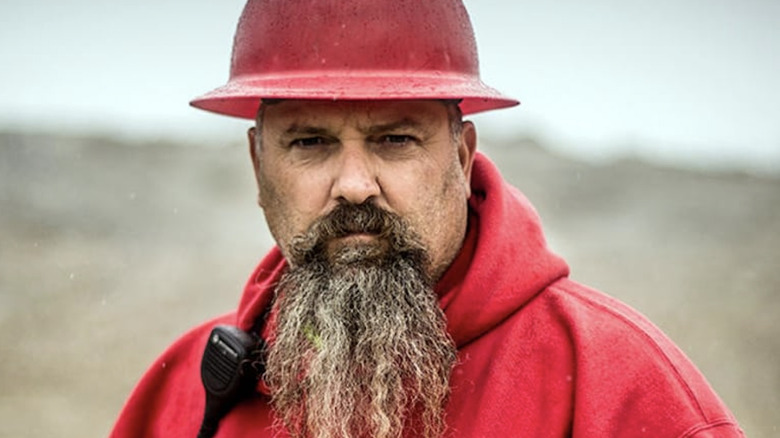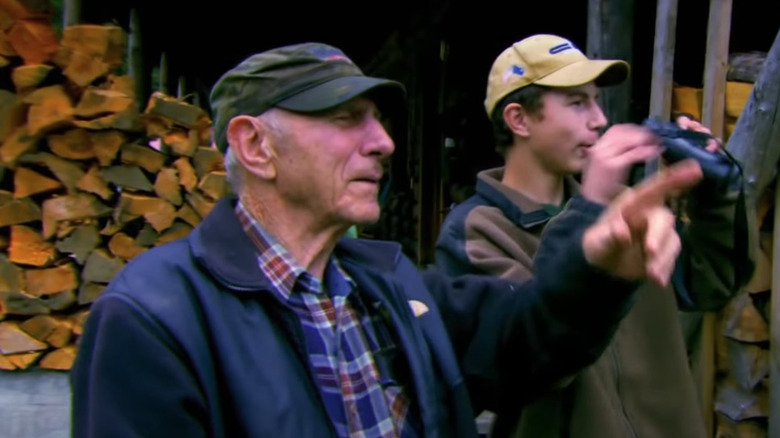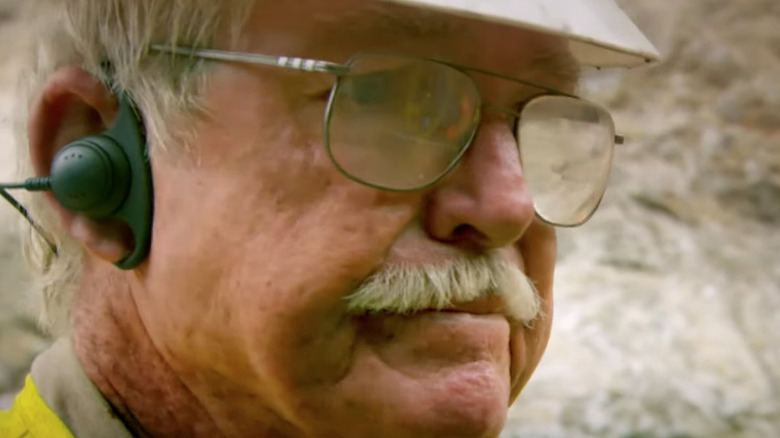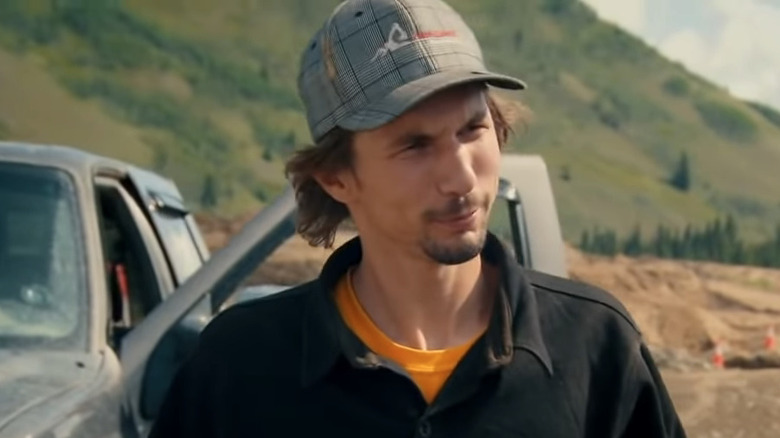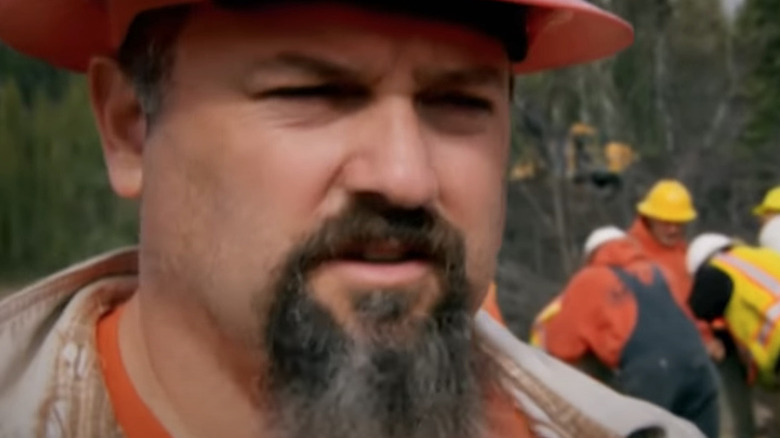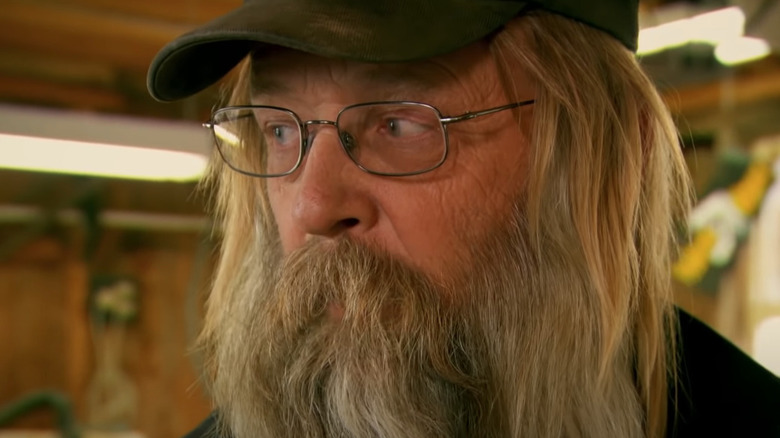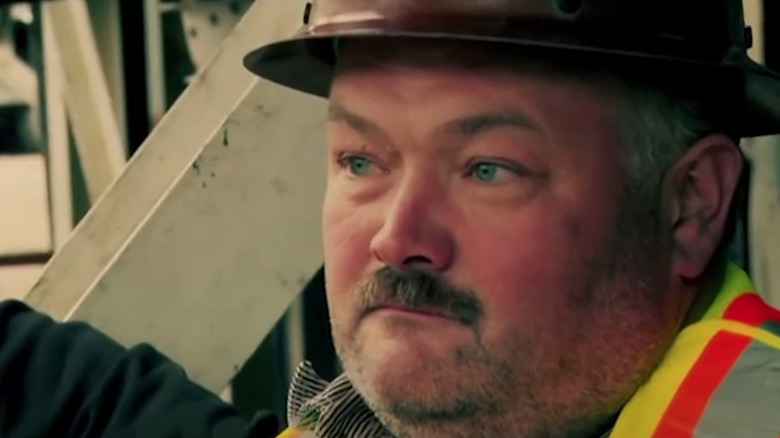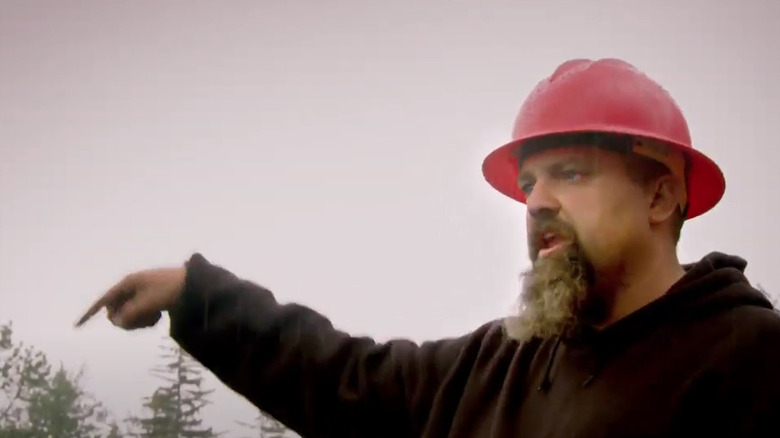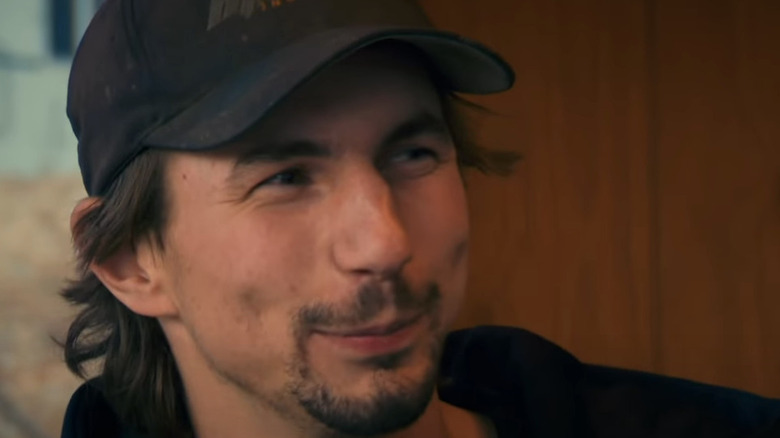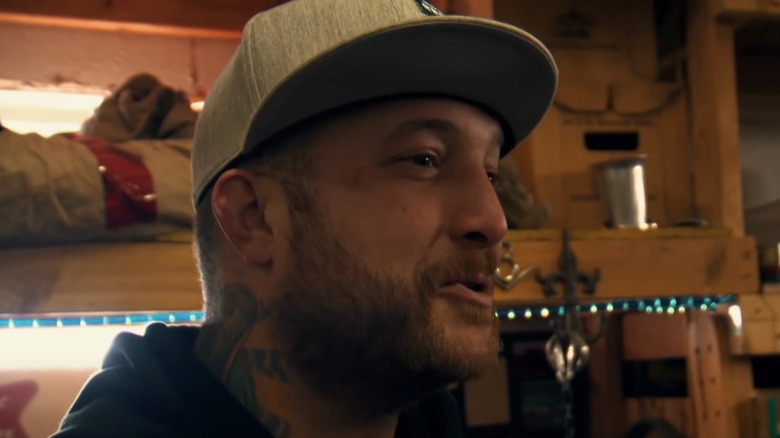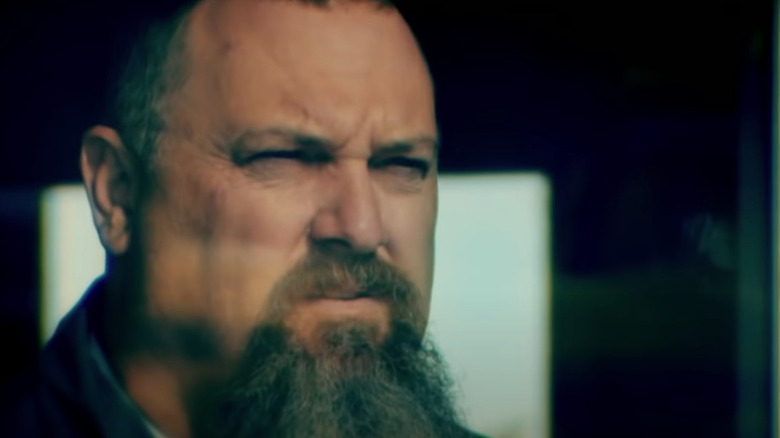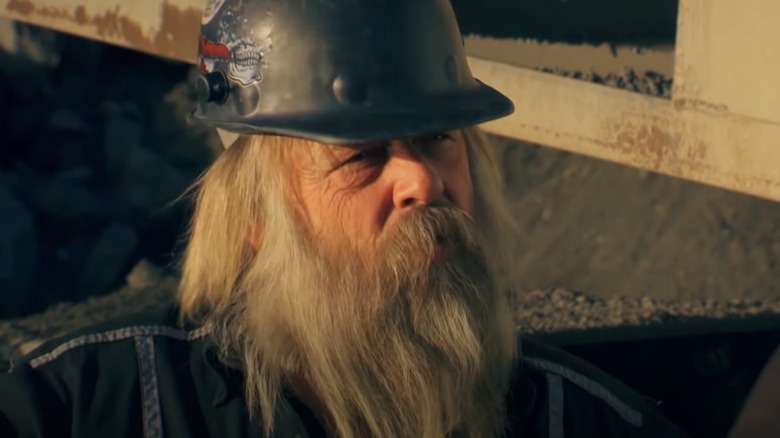Ranking Every Season Of Gold Rush From Worst To Best
Discovery's "Gold Rush" became a major hit for the cable network upon its premiere in 2010. The continuing adventures of inexperienced dreamer Todd Hoffman, young mining pro Parker Schnabel, and foul-mouthed Tony Beets have introduced millions to the world of modern day gold mining, with its wash plants and its glory holes. The series has inspired multiple spinoffs and special episodes, extending the "Gold Rush" universe from Porcupine Creek, Alaska to across the American and Canadian west, and from Australia to the jungles of Guyana.
Through the years, the men and women working these mines have faced uncertainty and triumph, beaten incredible odds and weathered devastating losses, all while carrying on the pioneering spirit of their pan-mining forefathers. As much as this is a reality show filled with outsized characters and potent drama, it is the real, rugged life that these people are living every day.
Still, it is a reality show, with highs and lows just like any other (and, perhaps, more scripted than it would seem.) Let's take a look at the first 11 seasons of "Gold Rush," ranked from worst to best.
11. Season 1
Todd Hoffman and his team of fledgling gold miners came to Porcupine Creek, Alaska from Oregon with a camera crew, a considerable amount of confidence and showmanship, and little to no actual mining experience. Season 1 of "Gold Rush" is largely dedicated to their at-times comical ineptitude, as they are saved from disaster more than once by longtime local miner John Schnabel and his grandson Parker, who at sixteen years old has more experience than this entire crew of greenhorns combined — a fact that seems to both amuse and annoy Hoffman. With their families in tow, the question of the season is whether Hoffman has led his partners (including his father Jack, the only member with past mining experience) to a new American dream or a terrible folly.
While perhaps a little too focused on the Hoffman crew's shortcomings, the season is nevertheless an accurate depiction of a very difficult six months in Alaska, with no sugarcoating to protect Hoffman's fragile ego. In the end, the rookie crew managed to mine less than one pound of gold. But the men are quick studies, and it wouldn't be long before their operations would become much more profitable (and make for better TV).
10. Season 2
Season 2 greatly expands the scope of the show, following three different mining crews and cutting back and forth between them, setting up the series' structure moving forward. The Hoffman crew's return to Porcupine Creek is short-lived, as a missed lease payment prompts the creek's owner to sell the claim to father-son mining team Fred and Dustin Hurt, aka "The Dakota Boys." Hoffman moves north into the Klondike in search of a new claim, landing in Dawson City, Canada, while Parker Schnabel works a claim belonging to his grandfather John, often by himself, seeking to make his own way in the world while still in high school.
The season emphasizes how sensitive mining operations can be, and how errors both small and large can swell into major problems, whether it's malfunctioning sluices on the wash plant, or Todd wrecking his bulldozer by trying to cut through frozen ground. Meanwhile, safety violations threaten to derail both Parker and the Dakota Boys' season, a reminder that though the show often celebrates the rugged individualism of its stars, they are nonetheless part of an industry that is heavily regulated and overseen.
9. Season 11
The COVID-19 pandemic casts a long shadow over this season of "Gold Rush," as production was unable to start on time due to Canada's travel bans. This delay lights a fire under the miners, compounded by the fact that the price of gold is higher, and the price of oil lower, than ever before. Everyone is scrambling to make up for lost time and take advantage of a perfect storm of profit conditions, leading Parker to open up a third site and Rick Ness to go all in on a corner of his site that may not yield as much as he hopes.
The season also introduces a new mining crew, a group of cocky rookies not unlike the original Hoffman crew. Led by Fred Lewis, a former Special Forces medic, the crew has the backing of an investor, but unfortunately not the ability or wherewithal to make any good use of it. After a season of swearing and finger-pointing (customary for "Gold Rush"), they end up with less than half of the gold yield that the Hoffman crew managed in Season 1. Nevertheless, their investor offers (threatens?) to back them for another season.
8. Season 3
It's the Dakota Boys vs. the Glory Hole in Season 3, which while not the best season of the show, is perhaps the most memed. Fred and Dustin are after the large deposit at the bottom of a small ravine on the Porcupine Creek property. At the end of Season 2 they discovered a wealth of gold from just a small sample, but were unable to excavate further due to a broken water pump. Now they have a new pump, but other troubles present themselves for the father and son, most notably the threat of melting snow from a nearby mountain flooding the entire site.
Elsewhere, Todd Hoffman and his crew are fighting to make their self-imposed 1,000-ounce quota by the end of the season. The ever-increasing yield goals would become a hallmark of the show, often serving as the climax and final measure of success for each crew. While the Hoffman crew misses that goal by about two hundred ounces, their yield is a huge success compared to the previous two seasons, and points the way to future seasons when crews are throwing around some serious money.
7. Season 7
Todd and his crew return to the lower 48 to open a mine in Oregon, but the yield is not what was expected. Facing a fast-departing crew and mounting debt, Todd relocates to an operation in Colorado where his fortunes improve. Meanwhile, Tony Beets, fresh off the biggest single haul of the series thus far, purchases a massive barge and sets up dredge buckets up and down the Yukon River.
But, in many ways, this is Parker's season. He is running his operation alone now, following the death of his grandfather John at the end of Season 6. He misses his own 21st birthday party, and while the show typically celebrates these miners' dedication to getting as large a yield as they can no matter what, the pressure is clearly getting to Parker, and the cameras see it. His end-of-season yield is the largest in the show's history at this point, but not everyone sees that as a victory. In the clip show episode "Parker Comes of Age," his mother recounts a story where she gently mentioned to him that there are other measures of success in life besides a large gold yield. His response? "Not if you're a miner."
6. Season 6
Parker faces a labor deficit as several members of his crew, including his longtime foreman Gene Cheeseman, leave camp at the beginning of the season. The management style of this teenage boss (or rather, the lack of one) is a focus of Season 6, as Parker hires on an inexperienced crew and is loathe to delegate responsibility, preferring instead to take his frustrations out on them when things go wrong. Some tough love from Grandpa John helps to set him straight — and on course to his biggest yield yet; these scenes gained an unfortunate poignancy when John Schnabel passed away after the season wrapped.
It's a family affair over at the Beets crew as well, as Tony promotes his daughter Monica to lead one of the dredges. This is the first time the show has had a woman in any kind of lead operational role in any of the mines. Though she's been mining with her father her entire life, the show emphasizes her nervousness at taking a lead role in a way that feels a little bit mocking, if not sexist. That episode's title, "Captain Monica," adds to the feeling that the show is having fun at her expense.
5. Season 4
Todd Hoffman gets the opportunity to mine a new claim in the Klondike; he goes to Guyana instead. Season 4 goes intercontinental, as the Dakota Boys continue to work the glory hole in Alaska, Parker sets up shop across the border in Canada, and Todd chases his muse to the jungles of South America, where his crew is once again entirely unprepared for what they are getting themselves into.
One of the best elements of "Gold Rush" is how thoroughly yet subtly it clowns Todd Hoffman at every turn, as he talks a big game only to be brought low by his own inexperience. The schadenfreude is particularly strong this season, as the Hoffman crew seemingly makes no effort to scout their new location ahead of time. As gold proves scarce, Hoffman pivots to diamonds, despite the fact that neither he nor any member of his crew has a day's experience in diamond mining. When that scheme goes bust as well, yielding barely over $1,000 in diamonds, the Guyana experiment is finally put out of its misery. Undeterred by his failure, however, Hoffman promises that his mining days are not over.
4. Season 10
The costs of doing business come to the fore in Season 10, as Parker, Tony, and Rick Ness each run aground at one point on budget issues, regulatory issues, or both. For Parker and Tony, water licenses prove a consistent headache throughout the season; Tony spends the first part of the season relocating his operation after his water license expires, while Parker scrambles at the end of his season to make his goal before his license expires. For the first time ever, Parker's yield at the end of the season is less than the season before — but it is still head and shoulders above what Tony and Rick pull in.
Rick has a difficult season once again, as he strives toward a paltry 500 ounce goal — and to prove himself once again as a capable leader. With costs mounting, he takes a chance on a new piece of land, despite the fact that the land's owner has already shut down production as winter approaches. In the end, Rick ekes past his goal with 547 ounces — a far cry from his yield in the previous season, but living to fight another day.
3. Season 9
Season 9 begins with Parker's foreman Rick Ness striking out on his own. Todd Hoffman has left the show and the mining industry to chase a new dream, whatever that might be (Not to worry — he'll be back in 2022 with the spinoff "Hoffman Family Gold"). With an inexperienced crew and an inexperienced leader, Team Rick reaches out for help in the form of former Hoffman stalwart Freddy Dodge. Their goal is 1,000 ounces, but the requisite machinery malfunctions and uncooperative elements get in the way before a final push nets them their yield.
Parker's season, meanwhile, is beset by personal issues. A longstanding beef with Tony Beets finally boils over in a fight for land access on their adjacent claims. Parker also has disagreements with Rick over a bonus Parker paid him that he felt was too small. On top of all that, he is responsible for a jet-boat accident that breaks the arm of one of his operators, and later must contend with a fire in his wash plant. In the season-ending special "Three Sides to Every Story," the trio of stars air out their grievances in one-on-one studio interviews. Though Todd may have left the show, the drama did not.
2. Season 5
After his disastrous season in Guyana, Todd Hoffman begins Season 5 with no money, no claim, and no crew. A broken man (except for the fact that he is still the star of a successful reality show), Todd considers leaving the mining life behind entirely, but his father Jack convinces him to begin work on a new claim in the Yukon. Soon, he has his old crew back together and is once again up to his old tricks, with the claim he's leasing under constant threat of being taken away by the landowner.
Tony Beets takes on his biggest project to date, refurbishing and relocating a 75-year-old dredge plant — his "Viking ship." With visions of a $7.5 million season dancing in his head, Tony pushes his crew, and perhaps the audience, past its limit to get everything up and running. In the end, the task ultimately proves too much for the Finnish miner; the dredge never gets off the ground the way Tony planned. Parker sets a 2,000 ounce goal for himself and surpasses it, leading him to dream of working his own claim without the need to pay royalties to its owner.
1. Season 8
Over the years there has been surprisingly little consideration of how the Alaskan and Canadian locals feel about the miners of "Gold Rush" moving in and using their homes to enrich themselves and become celebrities in the process. The Schnabels famously used the inexperienced Hoffman crew to their advantage in Season 1, but they are the local exception that proves the rule.
That all changed with the infamous Season 8 incident, where an altercation between some members of the Hoffman crew led to a local man opening fire on their truck. As the truck returns to camp to report what happens, Todd Hoffman flies into a panic and shuts down operations, fearing (perhaps too grandiosely) a coordinated attack.
The truth was more prosaic, but also more telling; the shooter was simply one man who was upset with the impact the show was having on his home. With its focus on the captains of each mining claim and their narrow paths to success each season, there is very little room on "Gold Rush" for even their non-mining family members, much less the people who live and work near these claims. The rest of the season mostly follows business as usual, with Tony Beets fighting yet another dredge plant and Parker once again beating his last season's gold yield, but the specter of that attack hangs over everything that follows.
